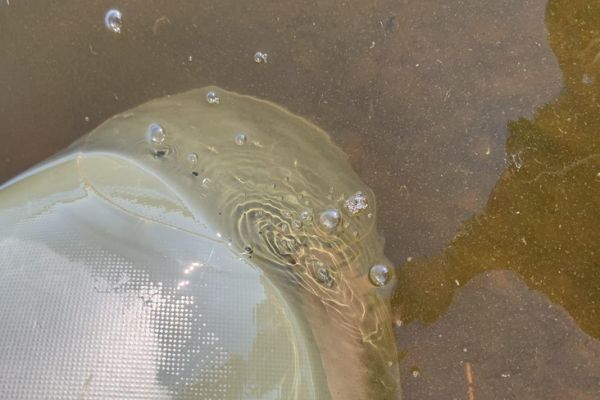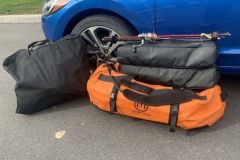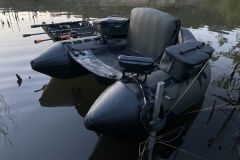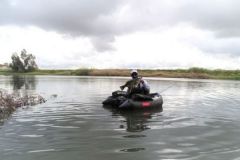Leaks
Leaks are unpredictable and often complicated to find. If you go about it methodically, you can locate them fairly quickly. For PVC or chambered models, the approach is the same.
First, to identify the leak, you need to keep your float-tube inflated. The pressure in the float-tube will make a small whistling sound, indicating the location of the leak.
Alternatively, you can submerge the float-tube to see where the air bubbles escape from.
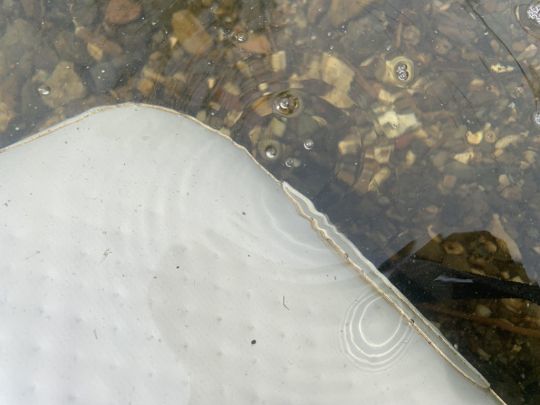
Finally, the third solution is to spray the float-tube with a mixture of soapy water, to see if bubbles form and find the leak. Very often, leaks appear at the fittings, because they come unstuck. This is where you need to start your investigation.
Once the leak has been found and identified with a felt-tip pen, if necessary, deflate the float-tube, wash the area to be repaired and lightly rub it with fine sandpaper, 400 grit or more. This action enables the glue to bond better with the material.
Next, brush the glue over and around the hole. Don't be impatient, and leave to dry for at least 24 hours.
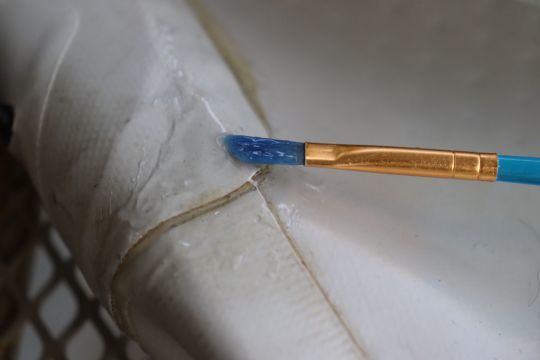
Aquasure, Aquaseal, tire repair products and wetsuit repair products are suitable for this type of repair. For larger repairs, a piece of PVC is added and glued over the hole.
Plastic hooks
The plastic hooks that hold the pockets or netting break easily, even without improper use, due to stress or the sun, which degrades the plastic.
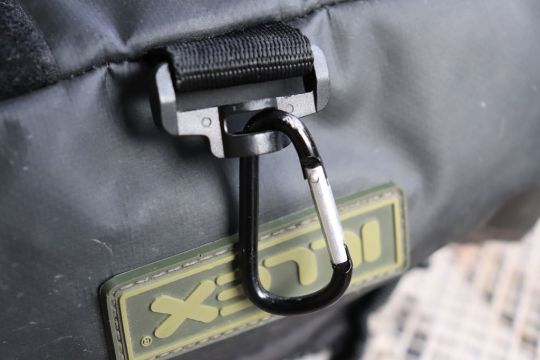
A lasting solution is to replace them with a metal carabiner, which makes them even easier to open and close than the original ones.
Strap fasteners
The plastic strap fasteners used to adjust the seat can also break easily.
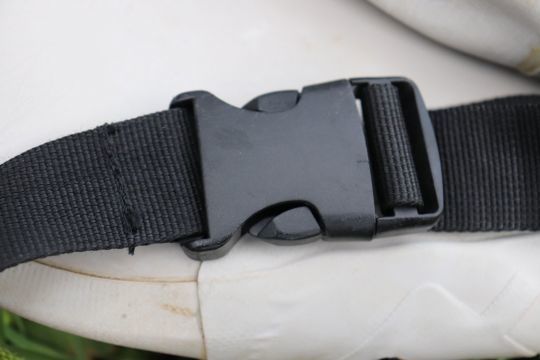
Don't worry, if this happens, you can find them on the market, in plastic or metal. They are often sold in packs of five or ten pairs, and can be found under a variety of names, including strap release buckle.
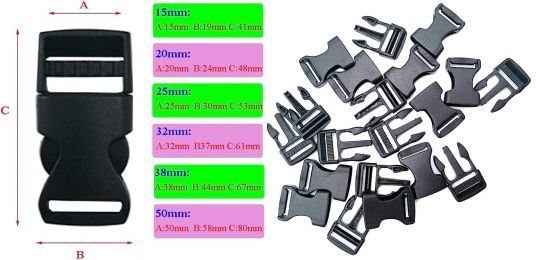
This makes it easy to repair your float-tube, without having to resort to various modifications. Just make sure you choose a model that matches the width of the strap.

 /
/ 